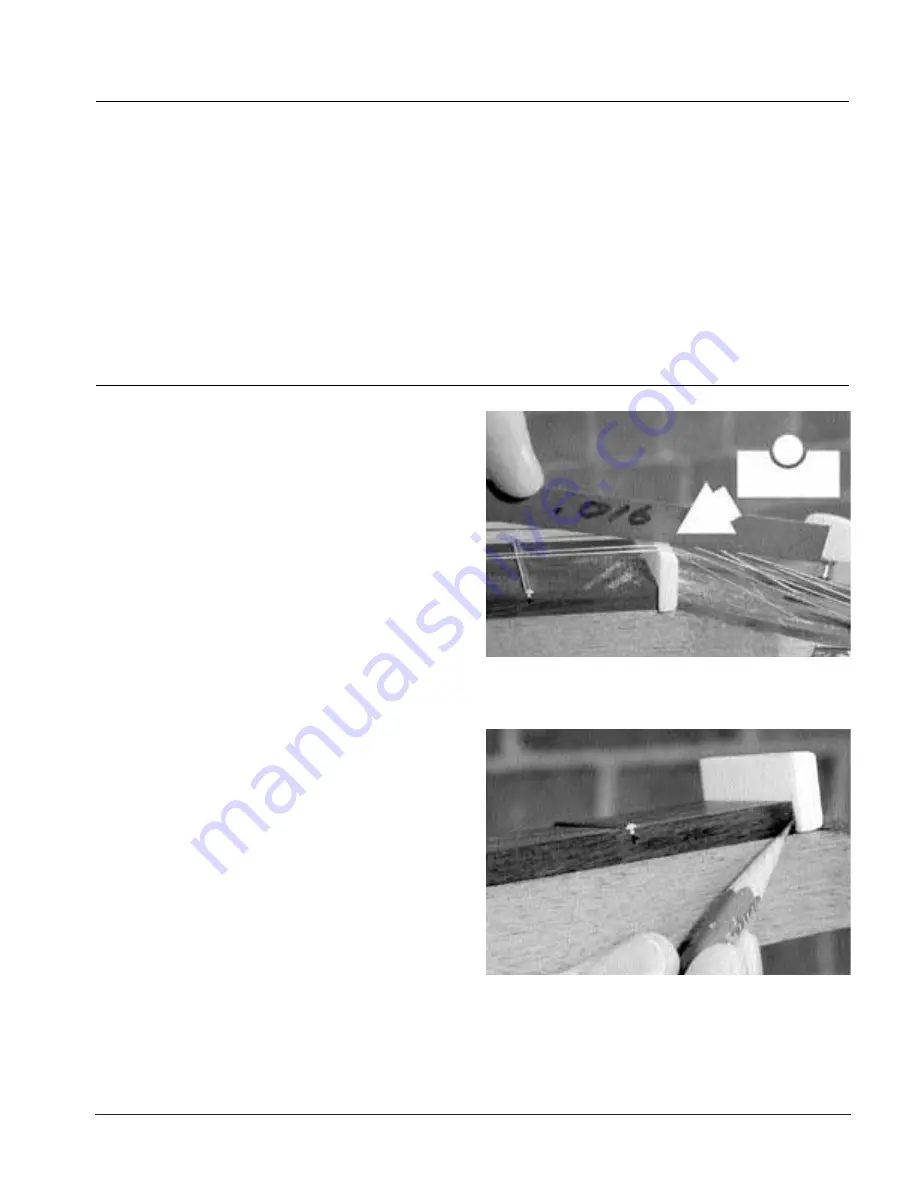
page 23
Next, go to the saddle and space the strings as you did at the
nut (divide by five, then move the strings around until the
spacing looks right). Lower all the strings at the saddle to
match the depth of the two outside strings that are already
cut reasonably close to their final depth. We left our strings
high by at least 1/32", the approximate amount that the cone
might compress (although not all cones compress) under full
string tension. If we had gone directly to the final measure-
ment without all the strings installed, we would have been
low by 1/32" because our cone did compress.
Now you should tune to pitch and finish lowering the slots at
the nut and saddle. After tuning to pitch, tighten the spi-
der/cone mounting screw an additional full turn. The first full
turn made earlier was with no pressure on the cone; the sec-
ond turn is now required because the added string tension
compresses the saddle and the spider enough that the screw
loosens). The most common bluegrass tuning, from bass
string to treble string, is G-B-D-G-B-D.
Lower each string one at a time, de-tuning enough that you
can lift it out of its slot to work. Do the nut end first, because
it’s easy (you don’t have far to go). Using nut-slotting files
and/or small razor saws
(49)
, simply lower each string until
approximately half of its diameter is cut into the bone nut.
The tops of all the strings should be even with a straightedge
placed across them. Since you are tuned to pitch, you will
need to de-tune each string a fair amount in order to lift it
free from its slot so you can work.
While you’re at it, make sharp pencil lines where the nut over-
hangs the fingerboard
(50)
. Later, when you dismantle the
guitar for finishing, you’ll use a file to remove the overhang
and give the nut its final shape before sanding and polishing
it smooth.
At the saddle, slowly lower the strings, checking the 12th fret
clearance often, until the approximate 7/16" clearance is met
and the tops of the strings are in line with a straightedge.
Cut the saddle notches
Tune to pitch
49.
Using nut-slotting files and/or small razor saws, lower each
string until approximately half its diameter is cut into the bone nut.
50.
With a sharp pencil, mark lines where the nut overhangs the
fingerboard.






























